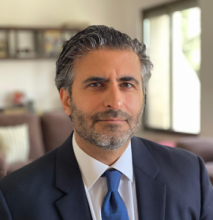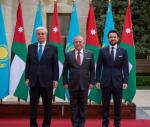You are here
From Lebanon to Tehran: Netanyahu’s escalation strategy
Aug 04,2024 - Last updated at Aug 04,2024
Since Israeli prime minister Benjamin Netanyahu's return from Washington, the atmosphere of escalation has become significantly apparent in the region, especially with Israel's move to the second phase of escalation by targeting a senior Hizbollah leader in his stronghold in the southern suburbs and simultaneously targeting the head of Hamas' political bureau.
These recent Israeli actions have reopened the region to the greater likelihood of regional confrontation at a sensitive time for the US administration, which is currently preoccupied with the upcoming presidential elections. Even in Iran, where political changes such as the sudden rise of Massoud Bezikian to the presidency and the return of former Foreign Minister Mohammad Javad Zarif as vice president for strategic affairs were seen as opportunities for settlements with the US under the premise that "the battle is more political than military".
In Lebanon, the targeting of the southern suburbs can be interpreted from several angles. The most important of these is the announcement that the southern suburbs of Beirut have been included in Israel’s direct targeting zone, although only through limited operations. More significantly, it targets the most prominent military and strategic figure of Hizbollah, who is also wanted by the United States, ensuring no American-Israeli dispute on the shape, type, and objective of the operation. This operation also puts significant pressure on Hizbollah, especially after months of targeting southern Lebanon and the border villages, displacing tens of thousands of residents to those southern suburbs of Beirut. This transformation exacerbates the problem for Hizbollah and its image among its supporters, with no real prospect for a solution amongsta worsening situation.
The most notable event was the assassination of Ismail Haniyeh, the head of Hamas' political bureau, in an operation with significant implications in all its spatial and temporal details.
Choosing Tehran, on the day of the new Iranian president's inauguration, at the height of Iranian security and intelligence alertness, and in a location owned by the Iranian Revolutionary Guard, all clearly indicate that non-traditional targeting of Iran is a focus of the next phase for the Israelis. They wish to deliver continuous provocations on Iran and keep the crisis atmosphere going until the arrival of a more resolute Republican US administration willing to adopt an approach of confronting Iran.
The three Israeli actions—targeting Hizbollah in the southern suburbs, Ismail Haniyeh in Tehran and announcing the success of neutralising Mohammed Deif—have placed the Iranian axis under unprecedented pressure, forcing it to respond to Israel. This appears to be part of the Israeli plan to drag everyone into a larger confrontation, which has put US military forces in the region on high alert and put the Iranians in a very tight spot, forcing them to respond or at least take retaliatory steps for an operation that tarnished their intelligence and security image in front of their allies and the world. The traditional response of sending drones or launching missiles may not be commensurate with the size of the operation inside Iran.
Thus, increasing the cost of targeting Iran for Israel is likely to be strategic plan for the Iranian response, which Iran may not succeed in achieving through traditional strikes or by pushing its proxies to open multiple fronts. A well-coordinated intelligence operation might require Iran to think of a parallel intelligence operation, at least to break Netanyahu's current euphoria and bring the crisis back to the Israeli intelligence agencies that want to overcome the trauma of what happened on October 7th.
With the current Israeli escalation, any real prospect for a quick resolution of the crisis that has persisted since October 7th seems to have dissipated, despite Israel keeping negotiation channels open and theoretically insisting on a desire to reach a settlement through mutual understandings. Practically, with this strike in Tehran, Netanyahu has temporarily freed himself from the burden of negotiations and shifted priorities in line with the goals he clearly outlined in his recent speech to Congress, which focus on eliminating Hamas, extending to Hizbollah, and then confronting Iran.
Nevertheless, despite the increased risk of a regional confrontation between Iran and Israel, the scenario of a full-scale war seems unlikely at this stage. Key actors in the current US administration still believe that an understanding with Iran could end the threat from these fronts and pave the way for regional settlement. However, Netanyahu's speech to Congress was clear in its intention towards escalation and maintaining the crisis atmosphere.

- Popular
- Rated
- Commented
Feb 19, 2025
Feb 18, 2025
Feb 19, 2025
Newsletter
Get top stories and blog posts emailed to you each day.













Add new comment